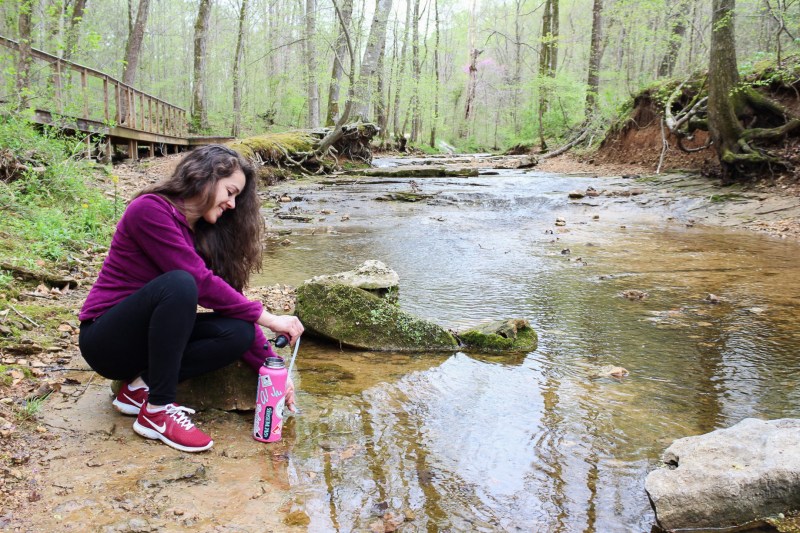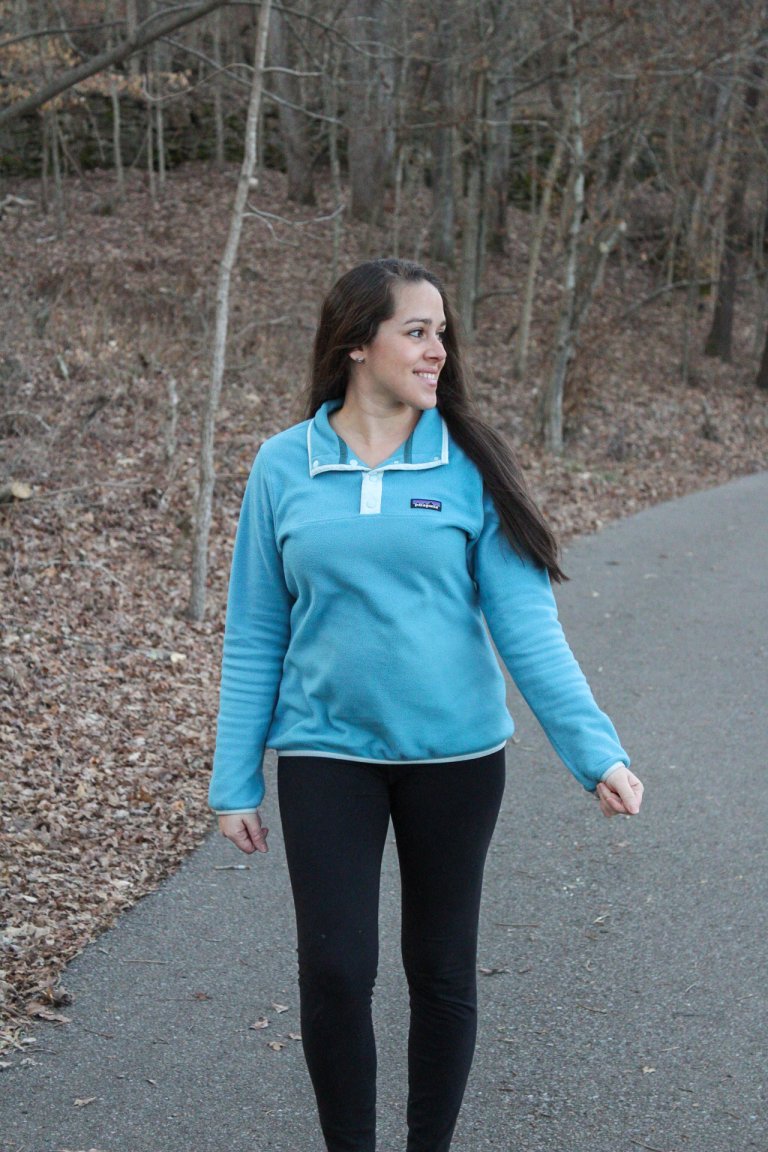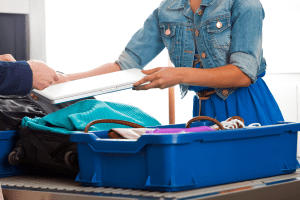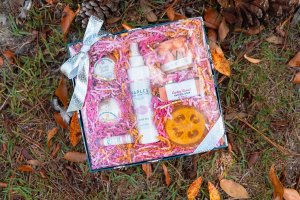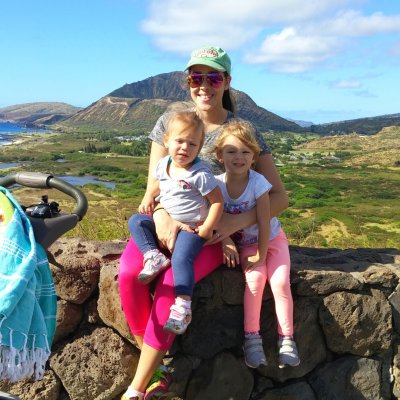One of my favorite ways to get outdoors is going on a hike or going on a camping trip with my family. However, when I started camping and hiking on my own I quickly learned what to bring to keep myself and my family safe. In this guide I want to go over THE TEN ESSENTIALS FOR HIKING AND CAMPING to help you stay safe and prepared outdoors as well. These essentials are key for survival and it is best to be prepared in case of an emergency. I will go over each of the items and share my best gear recommendations to use. I will also share tips on how to learn some key survival skills.

Disclaimer: There are affiliate links in this post. This means that I will receive a small commission at no additional cost to you. This commission helps me to continue to run this website. To learn more about how affiliate links work please read our Disclosure Policy. Thank you for using our links and for your support.
WHY ARE THE TEN ESSENTIALS SO IMPORTANT?
The ten essentials are key to helping you stay safe outdoors especially in emergency situation. Some of these essentials will help you find your way back to the trailhead or an area where you can find help when you get lost. Other essential items are to help you avoid injuries, dehydration, or even just to be prepared in case things take a turn. Having these items in your backpack handy can make a world of a difference in your hiking or camping experience.
** Please note that these items can be handy not just for hiking and camping but also for backpacking, rock climbing, and any other outdoor recreational activities. **
THE TEN ESSENTIALS FOR HIKING AND CAMPING
My goal with this post is to help you be prepared for emergency situations outdoors. You never know when something will happen to your or someone you are hiking or camping with. For this reason I think it is important to always be prepared and know how to handle emergency situations. I’m not just going to go over the 10 essentials that you need when exploring outdoors but also am going to link to a few courses that you can take that will help teach you various things like first aid and navigation.

1. NAVIGATION
Knowing how to navigate through the woods is very important. Some trails can be hard to follow with overgrown areas and little marks of trail which can lead to a wrong turn somewhere. It is important to know how to use a compass and a map to find your location and work your way back to the trail or civilization. However, now a days you can use a good GPS as well to navigate.
COMPASS AND A MAP
For learning how to use a compass I highly recommend taking a navigation class with REI at your nearest location to learn how to navigate. It is important to be comfortable with maps and using a compass in an emergency situation. If you can’t attend an in person class then I recommend doing this online navigation course on Udemy instead.
As for a compass I recommend using the Suunto A-10 Compass or something similar.
If you aren’t sure how to navigate with a compass and a map I highly recommend you take this course. It will teach you all the basics. I also recommend having this Map and Compass handbook handy as a refresher.
GPS FOR THE OUTDOORS
There are a few other ways to navigate through the woods as well. Now a days you can use a GPS as well. The Garmin inReach Explorer+ has been highly recommended to me by other outdoor enthusiasts.
2. SUN PROTECTION
Sun protections is very important for your safety and health. The sun can be very damaging to your skin and eyes so having simple items to protect yourself is important. Some of these items include:
- A hat
- Sunblock
- Sunglasses
- Long sleeves with uv protection
3. ILLUMINATION
Having some sort of illumination can make a world of a difference. You never know when you will run into a speed bump on the trail leading to you arriving back to your end destination when the sun has already set. Walking in the dark with no light can lead to you getting lost or even getting hurt by a slip or dangerous fall. This is another simple item to have in your hiking bag. Here is what I recommend you have:
- A headlamp with extra batteries
- A flashlight with extra batteries

4. HYDRATION
It is important to always bring hydration. Usually I pack my water in a bladder inside my pack because it is just easier to carry while hiking with kids. For extra precaution, I personally like to carry a small water filter with me just in case. One water filter that I highly recommend you have handy is the MSR Gear TrailShot Pocket-Sized Water Filter. It is small in size, lightweight, and easy to use. You can also just bring extra water. It is best to bring extra then not enough.
5. FIRST AID KIT + SUPPLIES
Having a good first aid kit is very crucial. You never know when you will have an injury, small or large. Whether it is a scrape or worse, it is important to have the proper first aid essentials and supplies to take care of it and avoid a possible infection. Here are a few items I recommend you have in your first aid kit.
- Bandages in various sizes
- Alcohol
- Steri-strips
- Benadryl – I like to have a topical and oral. I use the topical for insect bites and oral for worse reactions.
- Neosporin
- Gauze pads
- Blister treatments
- Medical tape
You can read a more detailed First Aid Kit Checklist here.
You can also buy a fully stocked first aid kit here.
To add to the list of emergency situations, I highly recommend you take a course for outdoor emergency. Things like knowing how to make a splint, stop a bleeding, or even know how to transport an injured person through the backcountry can make a life of a difference. REI also offers some great outdoor skills classes here or you can take this online Wilderness Outdoor First Aid course.

6. NUTRITION: FOOD AND SNACKS
You would be surprised by how many calories you burn while outdoors. It is important to have energy filled and high protein snacks in your pack along with some meals. This all depends on the type of trip that you are doing as well. If you are camping or backpacking, I would recommend you bring at least one extra meal. If you are doing a day hike then I would recommend having at least one dehydrated meal in your pack just in case on top of any other meals you may need for the day.
Pro tip: Have at least one dehydrated meal in your pack for emergencies.
EASY OUTDOOR MEAL IDEAS
- Instant oatmeal
- Ramen
- Dehydrated meals: I love meals from Outdoor Pantry and Mountain House.
- Tuna packets with crackers or tortilla shells
- Instant soups
- Instant mac and cheese
You can find some easy and lightweight meal ideas in this backpacking food guide by Clever Hiker.
EASY OUTDOOR SNACK IDEAS
- Granola bars
- Protein bars
- Jerky
- Trail mix
- Dried fruit
- Crackers

7. INSULATION: EXTRA CLOTHES
I always recommend to wear layers when hiking or at least bring extra layers. As you are going higher in elevation, the temperatures can tend to change. You can also run into an issue where the hike takes longer than expected meaning you end the hike after the sun has gone down. This can lead to temperatures dropping enough to need a jacket or even an extra layer or two of clothes depending on the location. For this reason, it is important to have extra clothes in your pack.
PRO TIP: Always pack an extra pair of socks on every hike.
8. REPAIR KIT: KNIFE OR A MULTI TOOL
When outdoors hiking or camping it is important to always have a knife and/or a multi-tool. I personally have a Gerber knife on me at all times. I use it to cut rope or for other things. Having a multi-tool is also important. It usually consists of different tools in it such as screwdriver, different style knives, pliers, etc. These different tools can help with different tasks. Say your headlamp fell and the component got lose. You can use your multi tool to put try to put it together.
As an extra, I would recommend having tape on you as well. You don’t have to bring a full roll of duct tape but having some duct tape individually rolled up in your pack can help. I remember when I was younger the sole of my boot came lose. I wasn’t well prepared so I used a rope to hold it together but duct tape could of been such a better and more comfortable fix. Duct tape can also help do quick patch repairs as well.
9. FIRE
Having a fire is important in case you get lost. Fire can help in so many ways such as boiling water to make sure its safe to drink, hygiene, cooking, and even staying warm. You don’t need nothing extravagant. A simple small kit like this UCO Titan Stormproof Match Kit or this Zippo Mag Strike Fire Starter if you know how to use it properly to light a fire with some tinder.
10. EMERGENCY SHELTER
Having an emergency shelter handy can make a huge difference if you ended up having to spend the night out in the wilderness. I would personally recommend a simple emergency blanket like this one which you can use in numerous ways. You can use it to create a shelter, for sleeping, or even for emergency situations such as hypothermia cases.

EXTRAS THAT I RECOMMEND YOU ADD TO YOUR BAG
I know there are ten main essentials but I want to talk about two more essentials that I find to be important as well when outdoors. These items may not be for emergency situations but should still be in your backpack or handy when camping.
11. TRASH BAGS
I highly believe in keeping our campgrounds and hiking trails clean of trash and other items that just don’t belong out in nature. For this reason, I always carry a trash bag or a few in my backpack on every trip. I am able to pack out my own trash and also grab trash along the way that I find. This is actually considered the 11th Hiking Essential by many hikers and key to keeping Leave No Trace principles alive outdoors. More info on Leave No Trace below.
12. HYGIENE KIT
Let’s be honest! We all have do the pees and the poops. There is no way around it! And if you don’t, I’m a bit worried about you. haha Because having to use the bathroom outdoors is inevitable, I believe that having a small hygiene kit in your pack is important. It doesn’t have to be something huge but as long as you have the essentials to not leave a trace of your feces outdoors then I think the entire world and even you would be happy. Here is what I recommend you have in a little reusable bag in your pack.
- A trowel
- A trash bag: I recommend you use a doggy poop bag
- A Kula Cloth for when you pee (Read more about the Kula Cloth here.)
- Toilet Paper for the poops or wipes
FAMILY HIKING ESSENTIAL GUIDES
If you are looking to learn more about hiking and the items that you need for hiking with kids then these two guides are perfect for you. They are more family focused.
LEAVE NO TRACE
And like always, when exploring the great outdoors make sure to always follow the 7 Leave No Trace Principles. By doing so you are leaving the trails clean and beautiful for others to enjoy as well.
FINAL THOUGHTS ON THE TEN ESSENTIALS
Being prepared when you go exploring outdoors is very important. I hope that with this outdoor guide I can help you be prepared with the essentials needed for survival. Remember that you can also learn so much online on emergency situations outdoors, navigation, and more.

